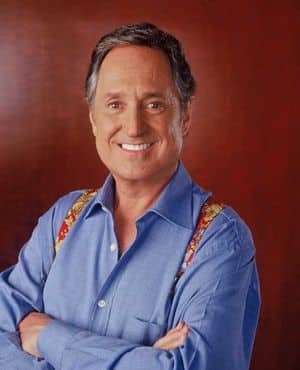Inglés/Castellano
Sephardic Jews have lived in many countries and lands. They have always brought with them a zest for life and a beautiful culture that is reflected in their creative work. In this seccion, a few of the many famous Sephardic Jews who have positively contributed to the world we live in. From rabbis to doctors and actors to poets, these Sephardic Jews have changed the direction and intensity of both the Jewish and Western World.
Los judíos sefardíes han vivido en muchos países y tierras. Siempre han traído consigo un gusto por la vida y una cultura hermosa que se refleja en su trabajo creativo. En esta sección, algunos de los famosos judíos sefardíes que han contribuido al mundo en que vivimos. Desde rabinos hasta médicos, desde actores hasta poetas, estos judíos sefaradíes han cambiado la dirección y la intensidad tanto del mundo judío como del mundo occidental.
——————————————————————————————
Neil Sedaka

Neil Sedaka, Sephardic Jew, composer, and rock and roll singer. Those who have followed the career of Neil Sedaka are overwhelmed by a great sense of awe. This 60 year old youthful, international superstar is a complete musician, because there has always been a duality between his classical roots and that of the rock n’ roll singer song-writer. Born in Brooklyn, New York on March 13th 1939, Neil Sedaka began his interest in music at the age of four, by listening to the radio programme, The Make – Believe Ballroom. At the age of 8, Neil began playing the piano for five hours a day. Sedaka was a promising pianist as a youngster, and was once selected by Arthur Rubinstein to play on New York City’s classical radio station; he also studied at New York’s prestigious Juilliard school. At the same time, he set down rock’n’roll and doo-wop roots by singing in an early version of the Tokens. After he had his first songwriting success with Connie Francis’ “Stupid Cupid” in 1958, he got a deal with RCA in the late ’50s as a solo artist. Sedaka’s own hits were well-crafted, but were probably the most innocuous, saccharine smashes to come out of the early Brill Building crowd. His rather thin, high vocals were boosted by multi-tracking, which was still a novel technique at the time. The big hits stopped rolling in for Sedaka a good year or so before the Beatles became popular in America. He concentrated more on the songwriting end of the business for the next decade, continuing to write with Greenfield and scoring occasional successes. He made an unexpectedly successful comeback in England in the early ’70s, where three of his albums were co-produced by Graham Gouldman of 10cc. By the mid-’70s he was recording for Elton John’s Rocket label, and got a #1 hit with the ballad “Laughter in the Rain” in 1974. That and “Love Will Keep Us Together,” which he and Greenfield wrote for the Captain and Tennille, did much to get MOR pop off the ground, and consequently make many wish that Sedaka had never re-emerged. Sedaka got another #1 hit, “Bad Blood,” in 1975, with Elton John helping out on background vocals. A slow remake of “Breaking Up Is Hard to Do” made the Top Ten the following year, and although he would never enter the Top Forty after 1980, he was assured of a successful career as a perennial on the MOR circuit. Richie Unterberger
——————————————–
Neil Sedaka, judío sefardí, compositor y cantante de rock and roll. Aquellos que han seguido la carrera de Neil Sedaka están abrumados por un gran sentido de temor. Esta superestrella internacional de 60 años es un músico completo, porque siempre ha tenido una dualidad entre sus raíces clásicas, las de cantante-de rock n ‘roll y de compositor. Nacido en Brooklyn, Nueva York el 13 de marzo de 1939, Neil Sedaka comenzó su interés por la música a la edad de cuatro años, escuchando el programa de radio The Make – Believe Ballroom. A la edad de 8 años, Neil comenzó a tocar el piano durante cinco horas al día. Sedaka era un pianista prometedor cuando joven, y una vez fue seleccionado por Arthur Rubinstein para tocar en la estación de radio clásica de la ciudad de Nueva York. También estudió en la prestigiosa escuela Juilliard de Nueva York. Al mismo tiempo, estableció sus raices en el rock’n’roll y el doo-wop cantando en una versión temprana de los Tokens. Después de que él tuviera su primer éxito en la composición con Connie Francis «Estúpido Cupido» en 1958, consiguió un contrato con RCA como solista por los últimos años 50. Los éxitos propios de Sedaka estaban bien diseñados, pero probablemente fueron los más inocuos y endulzados que salieron de la temprana multitud de Brill Building. Sus voces más bien delgadas y altas fueron impulsadas por multi-rastreo, que era todavía una técnica novedosa en ese momento. Los grandes éxitos dejaron de rodar por Sedaka un año antes de que los Beatles se hicieran populares en Estados Unidos. Se concentró más en la composición como para la siguiente década, continuo escribiendo con Greenfield y anotando éxitos ocacionalmente. Realizó un regreso inesperado y exitoso en Inglaterra a principios de los años 70, donde tres de sus álbumes fueron coproducidos por Graham Gouldman de 10cc. A mediados de los años 70 estaba grabando para el sello Elton John’s Rocket, y consiguió el número 1 con la balada «Laughter in the Rain» en 1974. Eso y «Love Will Keep Us Together», que él y Greenfield escribieron para el Capitán y Tennille, hicieron mucho para sacar a MOR del suelo, y por consiguiente hizo que muchos deseen que Sedaka nunca hubiera vuelto a emerger. Sedaka consiguió otro hit # 1, «Bad Blood», en 1975, con Elton John ayudando en la voz de fondo. Un lento remake de «Breaking Up Is Hard to Do» hizo el Top Ten al año siguiente, y aunque nunca entraría en el Top Forty después de 1980, se aseguró una exitosa carrera como perenne en el circuito MOR. Richie Unterberger
Fuente: lastar.org
 eSefarad Noticias del Mundo Sefaradi
eSefarad Noticias del Mundo Sefaradi

